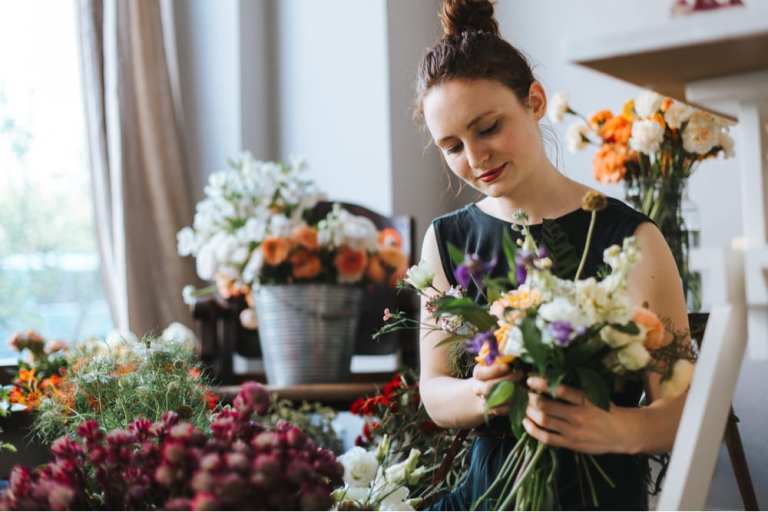
A rose by any other name may smell as sweet, but for small- to medium-sized businesses (SMBs) in the floral industry, unused product and wasted spend certainly isn’t a sweet deal.
Cash management and business operations remain a pain point for SMBs in creative, events-based verticals like the floral and catering arena. While revenues can be strong, margins remain thin, often thanks to supply chain disruptions and supplier management headaches.
It’s also a market that Curate Founder and CEO Ryan O’Neil said has been underserved by the B2B technology arena. As a result, he told PYMNTS in an interview, those unused David Austin garden roses can quickly become Abraham Lincoln roses, costing florists $5 per stem.
“That’s the impetus behind our platform,” he said. “You have disposable or consumable goods that expire, so how do we simplify this process to make sure that you aren’t having that bucket of leftover flowers?”
As O’Neil explained, finding success as a small, independent florist certainly requires technology that can tackle the unique pains in the market. But after a tumultuous 2020, it also means having the tools necessary to make one’s business model flexible and capture new revenue streams as they come.
Pruning The Excess Platforms
A lack of industry-targeted FinTech solutions for the floral industry currently has businesses attempting to cobble together a variety of platforms to run their businesses, as O’Neil said he experienced firsthand.
“We had information and documentation in 17 different places,” he said. “We had to have 12 different tabs up. We had Google forms, an invoicing software, and a payment processing software. We had this Franken-sheet made out of Excel to try to manage and calculate some numbers for us.”
Considering the nuanced pain points of the floral industry, such manual and unintegrated workflows were problematic. Flower species availability ebbs and flows with seasonality, supply chains often stemming from farmers across borders in markets like Ecuador and Colombia face backlogs, and products can wilt and die in transit if not delivered on time.
Agility and efficiency are critical to successful operations, yet without integrated workflows, florists are often forced to order from wholesalers last-minute, facing high product markups, said O’Neil. What’s more, to mitigate against the risk of not having enough viable product, or because they lack visibility into accurate inventory projections, florists can often order too much of a flower, only to have that product wasted at the end of an event — and have margins cut even thinner as a result.
This is where Curate has stepped in to streamline a variety of workflows, from payment processing to supplier management, in a holistic portal designed for florists and caterers. Driving efficiency means a florist can have several months’ — as opposed to a few weeks’ — worth of visibility into future orders to prepare.
Branching Out The Business Model
Many of the florists using Curate experienced a difficult 2020 thanks to the cancellations and postponements of weddings, making it all the more imperative that these businesses have adequate insight into operations and cash flow.
It was also a period that raised awareness as to the importance of a business model flexible enough to capture revenue beyond events. Working with employers looking to make employees’ home workspaces a bit brighter with a bouquet or collaborating with hotels and other business customers in need of arrangements for the lobby became valuable strategies to stay afloat, or even thrive.
Embracing a B2B model of operations comes with its own new challenges, however.
As O’Neil explained, contrary to what many might assume, it’s often more challenging to collect timely payment from a business client than it is from a couple planning their wedding day. He’s seen instances in which accounting departments explicitly demand 45-day payment terms instead of the traditional 30-day timeframe, for example.
“When you’re working in accounts payable at these large companies, they have that culture that arises,” he said, noting that these businesses will often treat invoices from a small, independent florist just like any other invoice. Typically, florists simply have to accept it.
“Our customers feel that because they want the business,” he said. “They want this great hotel brand on their resume and create an experience that a wedding or an event would not allow them to create.”
Making matters even more difficult when it comes to accounts payable (AP) and accounts receivable (AR) in the floral industry is that today, there are no industry-wide coding standards for products like a David Austin rose. As such, Curate does not have an integrated AR and AP function, instead opting to hand off that workflow for the florist to manage independently with business clients and vendors. But O’Neil said he’s confident that one day, the industry will adopt standard product codes that can open the door to AR/AP automation and B2B payments efficiencies.
As with so many SMBs, florists face plenty of friction in both the front and back office. Driving margins wider by embracing new business models is a must, but in order to do so effectively, these professionals need technology that can provide the kind of business intelligence and insights they need to move forward.
It’s not an easy task, however, and O’Neil said it’s forced entrepreneurs in the space to be more tactful about how they grow their businesses. Luckily, it’s an industry populated by creatives.
“People are thinking incredibly creatively about how to take every opportunity, from workshops to cooking classes to business and hotel arrangements,” he said. “The pandemic has really forced things that people never really took the time to think about.”